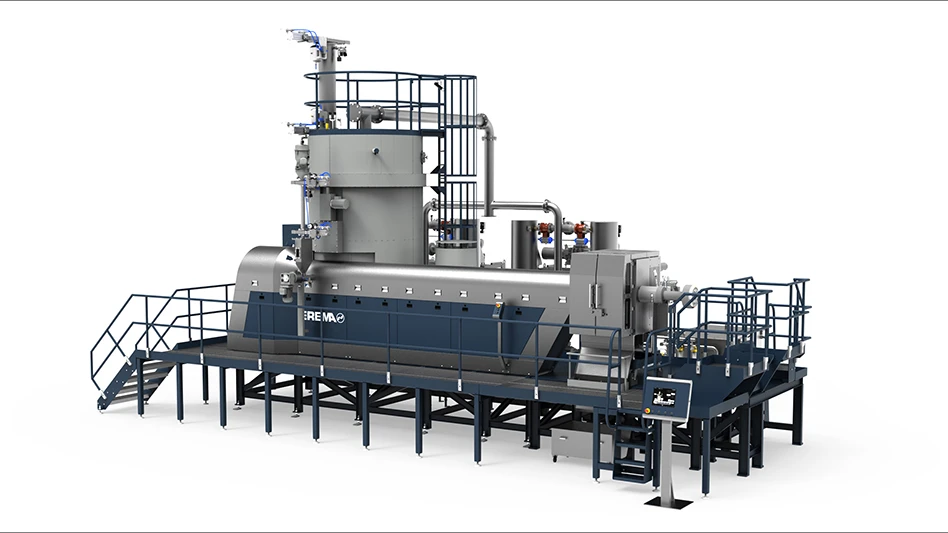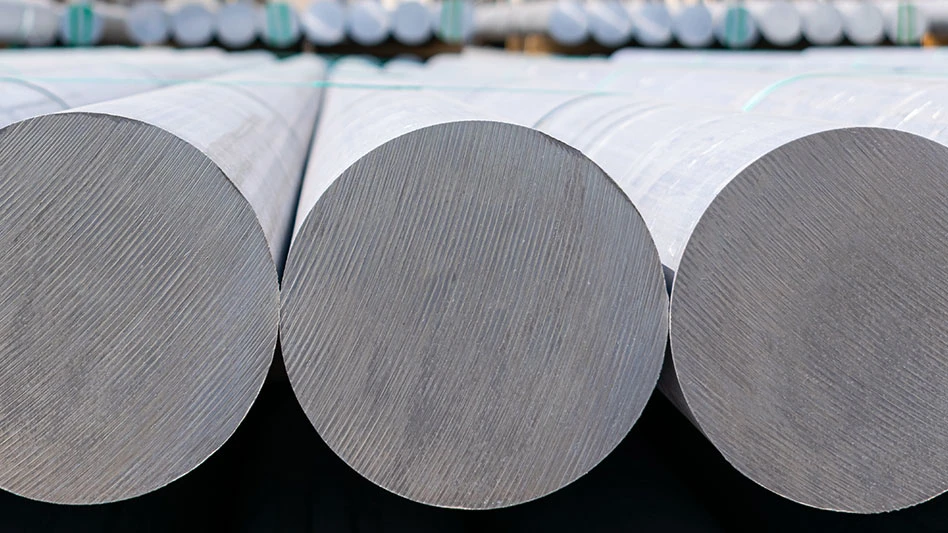| THE PRESENTATION |
| Click here to view Kathren Kneer's presentation slides for more detailed information. |
I was asked to come and talk to you about the forecast for paper and board demand and also about recovered paper developments. I am going to do just that.
FORECASTING DEMAND
North American demand is increasing through 2015 for packaging and tissue grades. This is essentially driven by increased GDP growth, increasing population and recovery from the recession. Of course, packaging is heavily dependent on consumption by consumers.
Unfortunately, North American demand is declining for the newsprint and printing and writing grades. This is driven by the structural change going on in these markets and, of course, it’s been exacerbated by the recession. One example of this is that the recession caused a large decline in advertising dollars. But more than that, advertising is switching away from print media and going to electronic media. If you think of your office environments and how you communicate with people, it is rarely through paper and almost always electronic. And our kids are going even more so that way. [It is] a huge structural change that is ongoing.
Asia is a totally different story. Of course the people there are embroiled in [electronic communications] as well, but in terms of the paper and packaging grades, there are growth rates there of between 4 and 5 percent in both consumption and production for almost every grade we would talk about. New capacity in Asia, including China but excluding Japan, will increase by more than 43 million tons going out to 2014. One of the big drivers is that consumption is increasing within the region itself as disposable incomes increase.
Of course production there is heavily recovered-paper based, which leads to interesting questions for fiber demand and supply. As demand for both virgin and recovered fiber increase, what has to happen there is that the collection of recovered paper has to increase. The rates will be increasing, and that means also the volume will be increasing. But will fiber supply keep pace with demand? How will it balance? How will virgin vs. recovered paper move forward within that region? In fact, is there a scenario where recovered paper demand will outstrip supply?
We will take a quick look at paper and board demand through 2015. Overall there is an increase from 390 million tons in 2007 to almost 450 million tons by 2015. This averages to about 1.8 percent yearly growth. All of that growth, or most of it, is in the emerging markets, which are going to grow at a higher rate of about 3.2 percent. Whereas, the mature markets, which include North America, Western Europe and Japan, will average a rate of decline of about 0.6 percent per year. Not a good picture.
Newsprint is the poster child for the decline, obviously. Demand and production is forecast to continue to decline in North America, whereas it will increase in Asia. In North America production will be higher than demand because of newsprint export, and we do expect this will continue through 2015.
Production and demand [in Asia] are both increasing—there is a gap—and we will continue to export to Asia and to other developing regions.
For printing and writing papers, the outlook is not as dire as it is for newsprint. Although demand and production are forecast to decline, it will be at the slower rate of about 2 percent a year. In fact there is more demand than there is production in North America. In Asia production is higher than demand. Imports from Asia have been a significant factor in North America, as have imports from Europe.
Tissue is an interesting picture [and] kind of an area all unto itself. Tissue is basically a local or a regional product. There is not a lot of trade in it. It will be increasing in North America at a slow rate. It will be increasing in Asia at a higher rate. But again it is basically a local product, though the pulp to produce it is imported from various regions.
Packaging is a very interesting segment. We include the container board, or corrugated boxes, as well as the carton board and other industrial grades. This segment, approaching 120 million tons, is more than twice as large as any of the other segments. It is a huge driver for both production demand and recovered paper usage. Although demand for packaging grades is forecast to increase in North America—it is relatively flat but increasing slowly—these grades will be exported to Asia and to other developing regions.
If we look out a little further to 2025 and compare the forecast with production and consumption in 2008, we can see how the growth in production is switching to China and the rest of Asia. The growth of paper and paperboard production is shifting outside of the traditional supply areas—the developed regions—and to the developing regions. This will change the balance of supply and demand for fiber in general and recovered paper specifically.
LOOKING INSIDE
We will spend a few minutes now on North American developments. Some of these trends, of course, you are pretty familiar with. Lightweighting, for example; we’ve all heard a lot about that. In packaging, the trend toward lighter weight continues. The questions are, What is the rate of lightweighting going to be and how low will it go on in North America? Newsprint lightweighting has already occurred. There is some movement toward lighter weights but it is basically done. In printing and writing, it is more of a mixed story. There is continued lightweighting in some end uses that are specifically related to distribution costs—increases in postal rates.
Another trend is the increased use of recovered paper in production. A lot of companies in North America see providing recycled-fiber content as an opportunity for [market] differentiation. In containerboard there is the bigger issue of kraft liner vs. test liner. What is the exact definition of kraft liner anymore? Almost all of it has some recycled content—how much does it have? There are many factors that impact the use of recycled vs. virgin fiber in container board. The cost of fiber is certainly a big issue, and that has been very volatile in the last few years. Availability is another big area of concern and something that causes volatility. Who controls the fiber is also a question mark. And, of course, [there are] incentives to use one fiber over the other, as we saw last year with some government intervention.
Tissue is trying to project a greener image, and there are companies doing a lot with recycled fiber there.
Printing and writing has issues with certification vs. recycled fiber. But, again, some companies see opportunities for [market] differentiation by providing higher levels of recycled fiber.
Then the big question is what does the decline or slow growth of production mean downstream, especially with regard to recovered paper? Increased collection can only come from higher collection rates in North America and [from] tapping more sources, not really from relying on increasing production. What are the implications for the cost of fiber going forward, because the cost of fiber is very much dependent on the cost of collection, and collecting further down the stream generally adds cost.
What does the lower rate of growth for [consumer goods] imports mean [for OCC] and will consumer purchasing come back? If we take a quick look at what has gone on for the last 15 years, we can see that the recession has had a serious impact on the imports of durable and nondurable goods. Durable goods imports to North America declined by nearly 20 percent in 2009, while nondurable goods declined by roughly 8 percent.
SPOTTING THE TRENDS
Demand for OCC (old corrugated containers), and containerboard essentially is the big consumer of OCC, will increase by almost 60 million tons through 2025. So where will that come from exactly?
Western Europe, Japan and even Oceania are at high rates for recovered paper collection and paper consumption per capita of between 60 and 80 percent. North America is certainly the largest consumer on a per capita basis, but we are slipping backwards. We are going back to a level that Japan is at. In fact, consumption here is declining or decreasing, even though our recovery rates are increasing, so volume won’t keep pace in North America. It is going to be up to China and the other developing regions to start increasing their per capita consumption and their recovery rates. Of course with the population in Asia or China, there is a lot to be recovered.
Our forecast would be that China and other Asian countries will increase their collection significantly and it is due to growth and increases in consumption of goods and increasing collection rates. China will be producing more than 80 million tons per year of paper and board, for example. But, is this going to be enough? And, if not, what does it mean for manufacturing in that region or any region? What does it mean to the trade of recovered paper or fiber in general and what does it mean for the cost of recovered paper?
The author is a senior consultant with Pöyry Management Consulting USA. She can be contacted at kathren.kneer@poyry.com.
Get curated news on YOUR industry.
Enter your email to receive our newsletters.

Explore the October 2010 Issue
Check out more from this issue and find your next story to read.
Latest from Recycling Today
- LumiCup offers single-use plastic alternative
- European project yields recycled-content ABS
- ICM to host colocated events in Shanghai
- Astera runs into NIMBY concerns in Colorado
- ReMA opposes European efforts seeking export restrictions for recyclables
- Fresh Perspective: Raj Bagaria
- Saica announces plans for second US site
- Update: Novelis produces first aluminum coil made fully from recycled end-of-life automotive scrap





